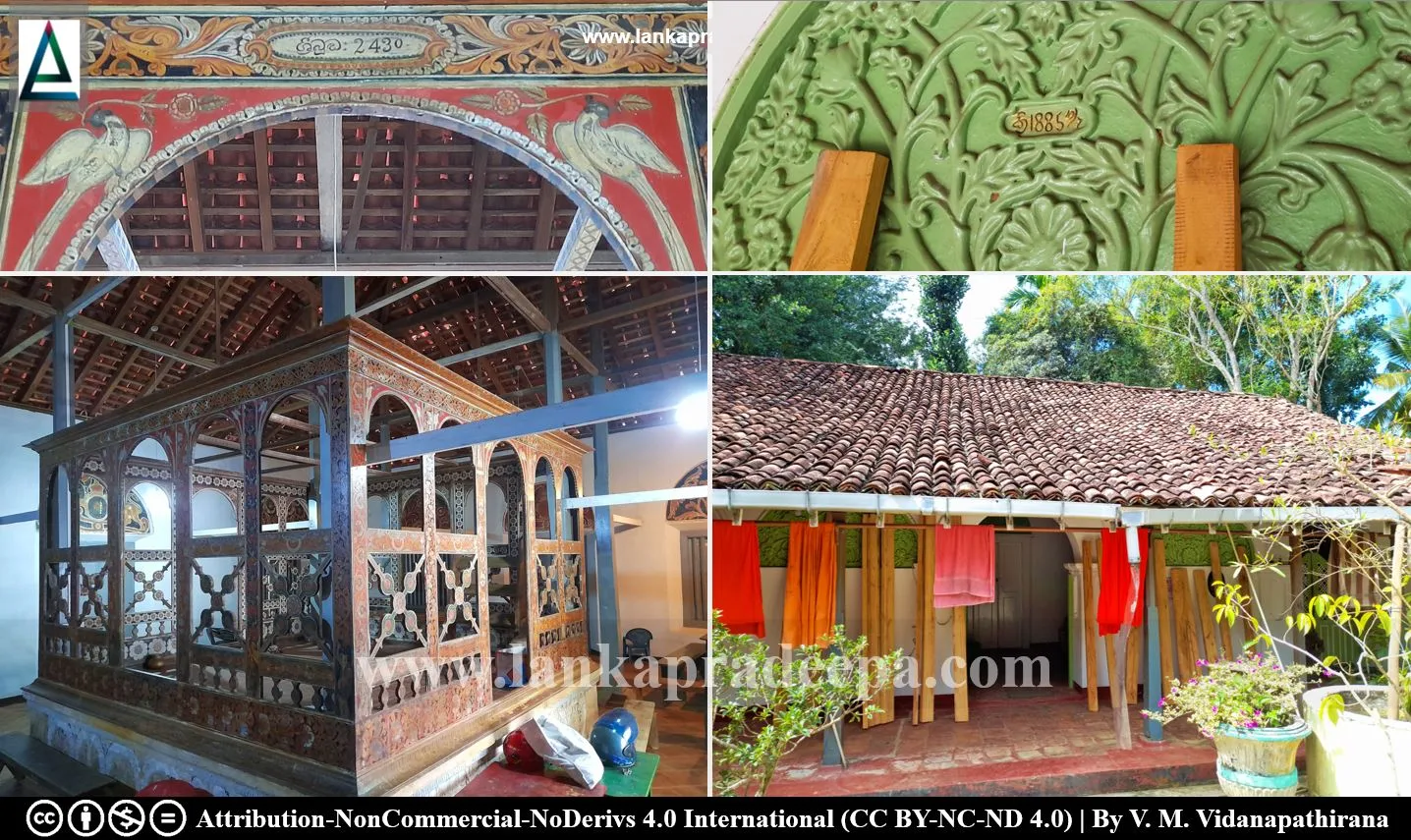
|
Kirti Sri Thejowararama Viharaya |
Kirti Sri Thejowararama Viharaya (Sinhala: පල්ලාවෙල කීර්ති ශ්රී තේජෝවරාරාම විහාරය) is a Buddhist temple situated in Pallawela village in Matara District, Sri Lanka.
History
The history of Thejowararama Viharaya goes back to the first half of the 18th century (Prabuddha, 2017). Ransegoda Dhammadassi Thera, the founder of the temple was among the first group of low-country monks who went to obtain Upasampadawa (higher ordination) from Siamese monks (monks from Thailand) who arrived in Sri Lanka at the invitation of King Kirti Sri Rajasingha (1747-1782 A.D.) of Kandy (Prabuddha, 2017). The eminent Kandyan Buddhist monk Weliwita Sri Saranankara Thera was instrumental in re-establishing the Upasampada (higher ordination) in the country in 1753 with the support of Kirti Sri Rajasingha after the religion declined in the 17th and 18th centuries. It is said that Ransegoda Dhammadassi Thera performed religious rituals at this place as a Ganin Vahanse before obtaining the higher ordination.
After obtaining the higher ordination, Ransegoda Dhammadassi Thera came back to the temple with some of the gifts bestowed to him by Kirti Sri Rajasingha. It is believed that Ransegoda Dhammadassi Thera received the honorary title "Kirti Sri Thejowara" from the Kandyan King later (Ranaweera, 2015).
The Temple

The temple has been constructed on two plots of land separated by a stripe of paddy fields (Ranaweera, 2015). The image house, Bo tree and the Stupa are located on one land while the monks' dwelling, preaching hall and other buildings are on the other plot of land. The preaching hall shows features of Dutch architecture and the wooden pavilion inside it is marked with the Buddhist year 2430/Saka year 1810 [(1887 A.D.) Prabuddha, 2017]. The wooden panels of this pavilion are adorned with paintings of the Kandyan tradition. Inscriptions denoting the date 11 September 1860 are found engraved on the stones laid at the entrance of the preaching hall. The monks' dwelling building is marked with the date 7 September 1885/Saka year 1807. Also, some stone artefacts containing Sinhala and English notes with the dates 1 September 1893 and 1 October 1905 are found within the temple premises.
The image house preserves a valuable collection of murals belonging to the Kandyan art tradition. A reclining Buddha statue and two seated Buddha statues in Dyana-mudra are found in it along with several images of Buddhist deities. The walls are adorned with murals depicting Arhats, the Suvisi Vivaranaya (Buddha to be receiving the blessing from 24 previous Buddhas) and the Sath Sathiya (the first seven weeks after the enlightenment). The figures of Ransegoda Dhammadassi Thera and the lineage of his students are also found in the image house.
Some ruins of buildings have been recorded in Veheragiritenna mountain located near this temple (Ranaweera, 2015).
A Protected Site
The ancient Pirith Mandapaya (Pirith chanting chamber) and the two ancient Sanghavasa (dwelling house) Buildings and the ancient shrine with paintings belonging to the Pallawela Kirthi Sri Thejovararama Viharaya premises situated in the Kithsiripura Grama Niladhari Division in the Mulatiyana Divisional Secretary’s Division are archaeological protected monuments, declared by two government gazette notification published on 24 July 2009 and 30 September 2022.


Related Posts
Read Also
References
Books, Government Gazette Notifications, Journal Articles
1) Prabuddha, G. M. S., 2017. පල්ලාවෙල රජ මහා විහාරයේ විනාශ වී යන පුරාවිද්යා උරුමය පිළිබද සොයා බැලීම (In Sinhala). 2nd Undergraduates' Research Conference (URACT). p.32.
2) Ranaweera, D. D., 2015. Matara Urumaya (in Sinhala). ISBN: 978-955-30-6285-7. S. Godage & Bros. pp.56-58.
3) The Gazette of the Democratic Socialist Republic of Sri Lanka. No: 1612. 24 July 2009. p.1023.
4) The Gazette of the Democratic Socialist Republic of Sri Lanka: Extraordinary. No: 2299/61. 30 September 2022. p.2A.
Location Map
Dynamic Google Map
Attribution
To Whom
LankaPradeepa.com extends its gratitude to Mr V. M. Vidanapathirana for providing the necessary photographs required for this article. All the photos are published here with the permission of the author.

